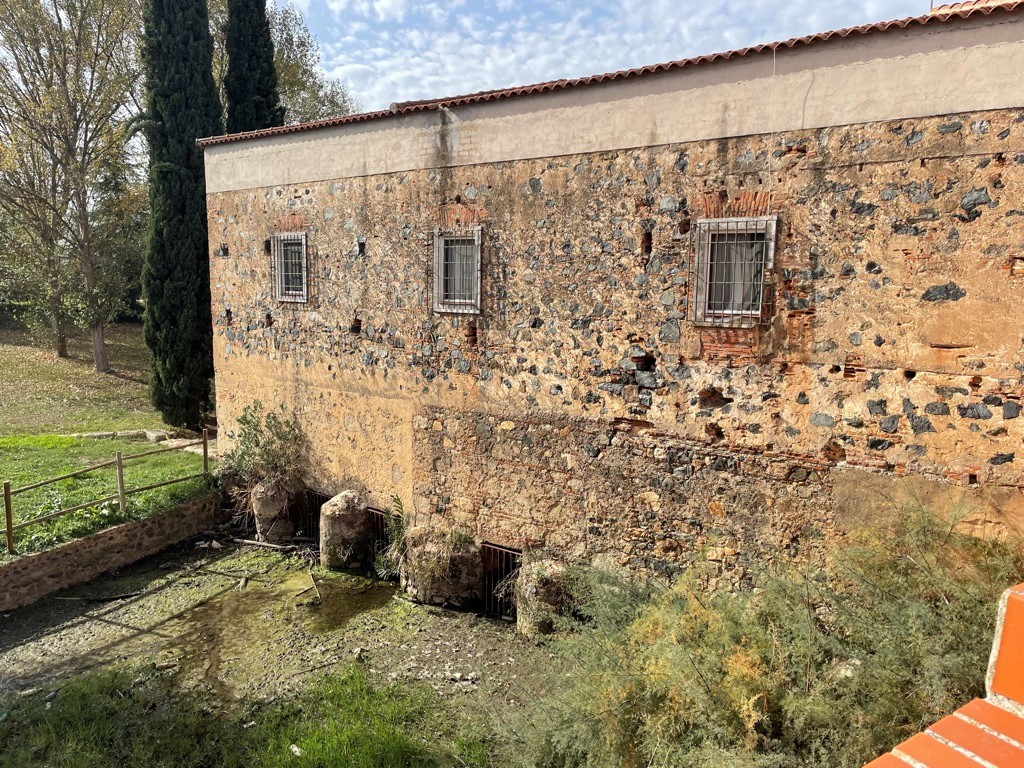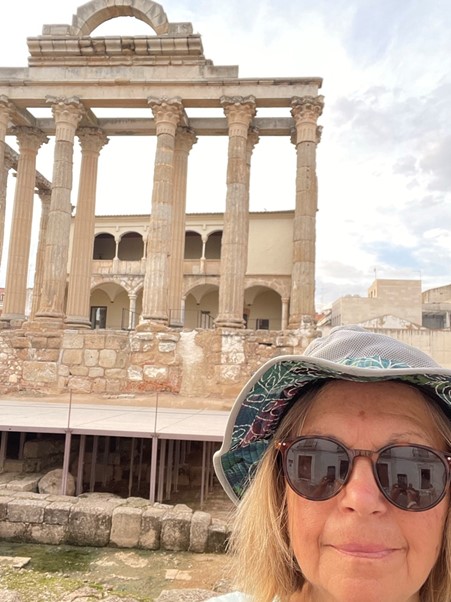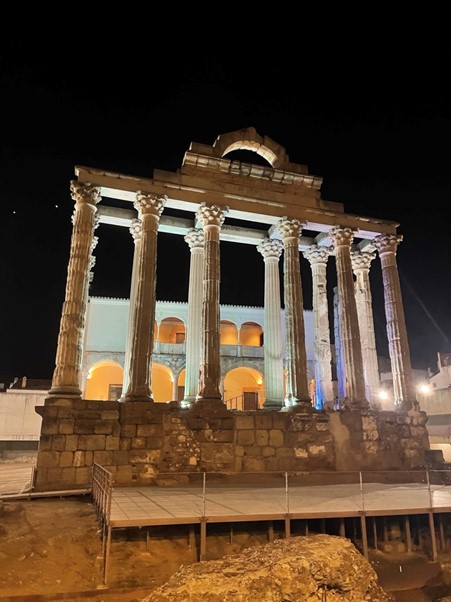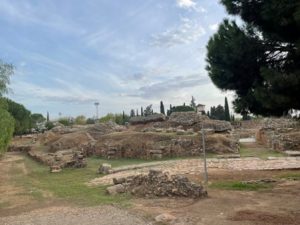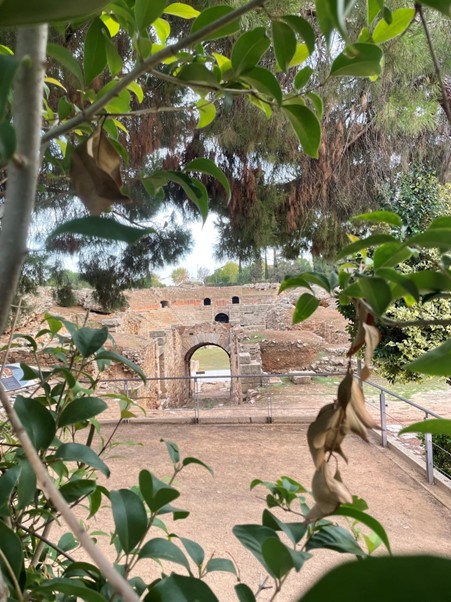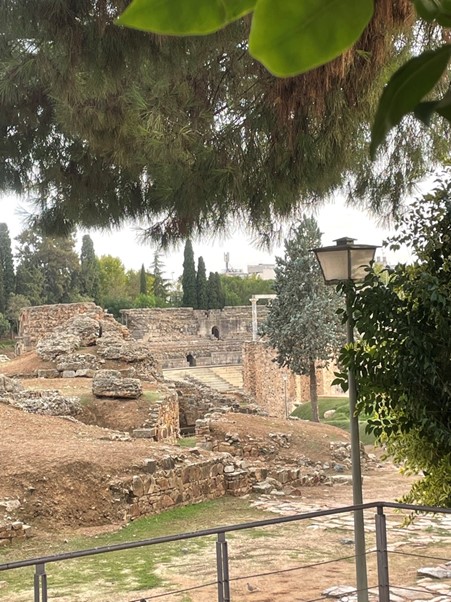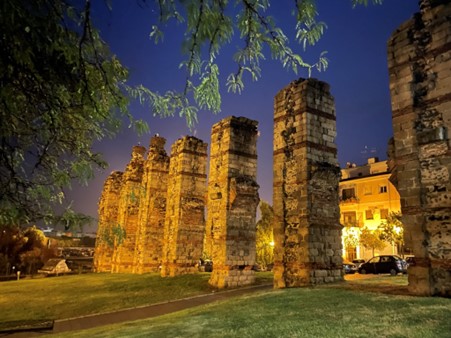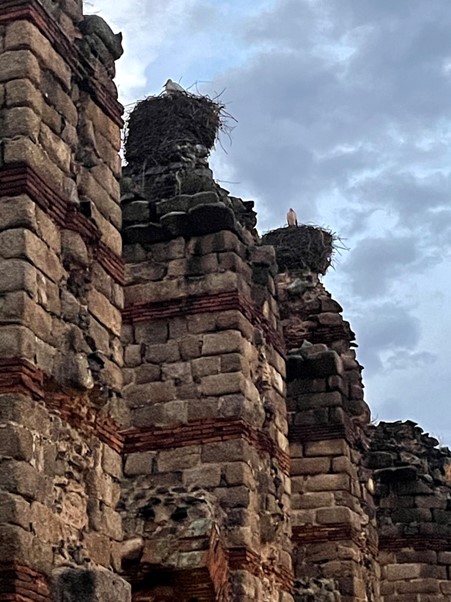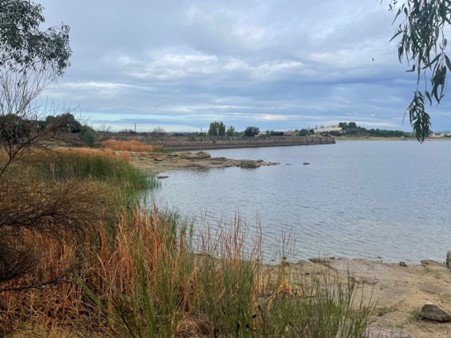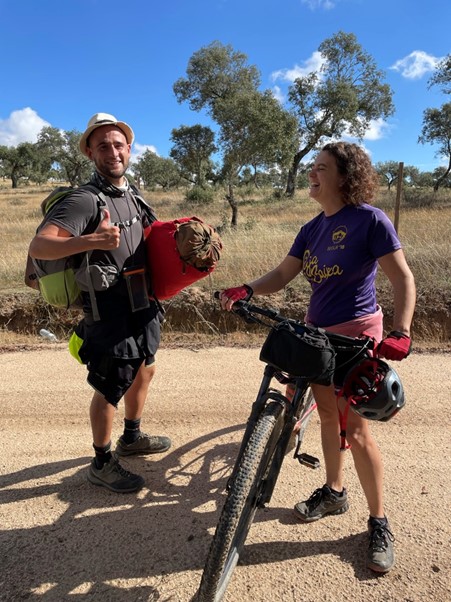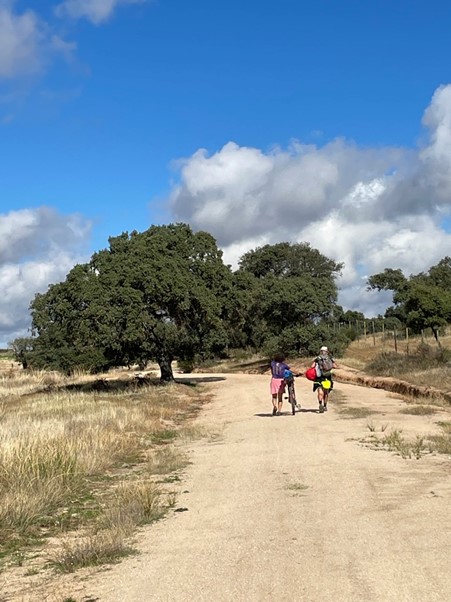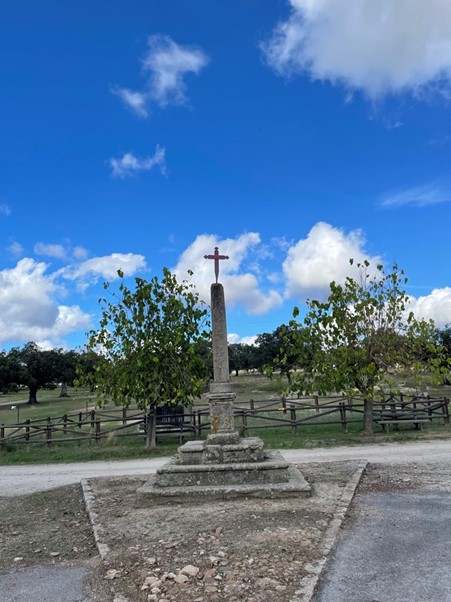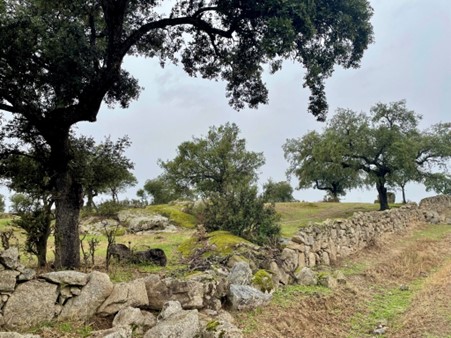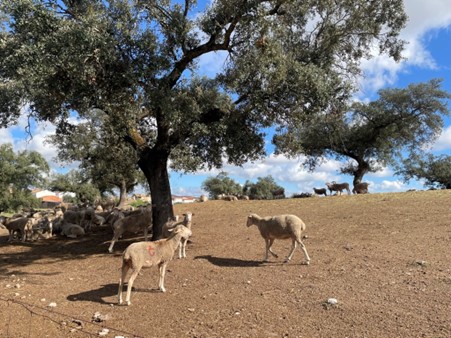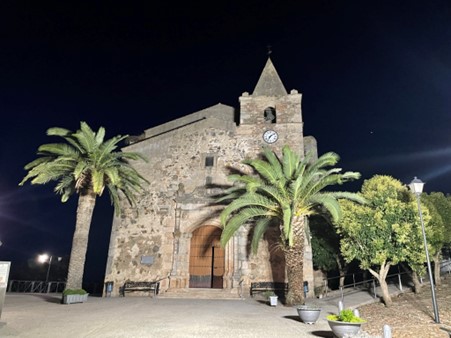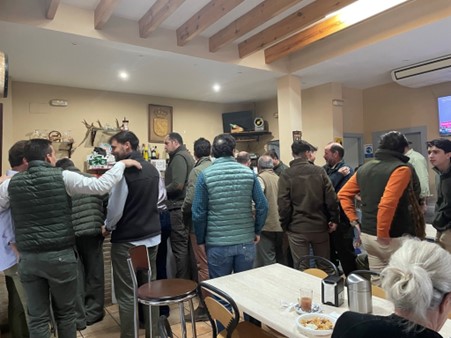Merida
.
.
.
.
It was early afternoon when I walked into the old town of Merida over Puente Romano, the longest bridge of the Roman Empire (800m and 60 arches). I still was limping and my left eyelid was purple looking like a ripe olive from the fall the day before. I now felt that I was initiated into my age group.
When I arrived at the Albergue, an old stone house beside the river, the house was closed. I called the telephone number attached to the entrance door to let the hospitaliero know that I was there. Several minutes after he arrived, a man with a big suitcase came to the door too. He was not a pilgrim but ask for accommodation, which he was able to get.
.
.
.
.
The house looked very charming from on the outside, but it was very uncomfortable inside. It was dirty, had only one room with about 8 bunkbeds and nowhere to really sit down. I was tempted to look for another accommodation. However, this would have taken away time from discovering the city and I decided to stay. After choosing my bed at the entrance (the man had chosen the bed in the center), he started to talk with me in Spanish and broken English. Several times, he asked me if I was going out tonight – which made me very suspicious! I decided to go shopping and come back before leaving for sightseeing and felt guilty that I did not trust him.
.
.
.
In the far back, two pilgrims already had moved in, but where not present when I arrived. The bed I had chosen was the first to the right. I always had my own liner with me, a silk, very thin sleeping bag. I had to ask for a blanket, as the night was cool.
Merida was founded by the Romans as “Augusta Emerita” in 25 BC and was one of the most important and beautiful towns of the Roman Empire. After the Romans left, it was falling into hundreds of years of slumber. The rich Roman heritage, however, made it a tourist destination and in 1993, it was declared an UNESCO World heritage site. Unfortunately, due to my time constraints, I only could see a glimpse of the richness of the Roman past. One of my favourite buildings was the ” Templo Romano de Diana”, with its splendid elegant columns.
.
.
.
.
At the start of my city walk, I wore sun glasses in order to hide my purple eyelid. I took them off when it got dark and decided not use them anymore to hide my injury.
.
.
.
.
Temple during the night with the 23m high columns. During the 16th century, the temple was integrated into the walls of a palace, which saved the structure. For a long time, I was sitting in front of the temple with many other people, listening to a street musician playing a handpan – the atmosphere was magical.
I wanted to also visit the Teatro Romano and the amphitheatre, but arrived too late at the entrance door. They closed at 6pm. I only could peak through the fence to see what I missed.
.
.
.
.
Roman ruins photographed through the fence
.
.
.
Roman ruins photographed through the fence
.
.
.
.
Roman ruins
.
Several other pilgrims had checked in when I arrived in the Albergue. One of them was Pedro Pablo, a young man who was on the pilgrimage for 140 days and walked about 3000 km. The day we met was his last day. I asked him what he had learned. ” I became a different human being” he said. “The camino gives and takes away and most importantly, stops the chatter in your mind”. I agreed with him. Only when the mind is empty from the usual chatter concerning the self, is it possible to get an intimate connection to nature, to oneself and other beings. i was so grateful that I could meet this wonderful human being.
It was rainy and dark when I left the Albergue in the early morning. I passed the Roman aqueduct “Acueducto de los Milagros” on the way out of the city and could not stop to be in awe. On nearly each of the 25m high pillars was sitting a stork clapping with its beak, chatting their songs into the morning. Other birds also had their nests high up there and were flying around the tops of the pillars. The architecture of this aqueduct was stunningly beautiful!
.
.
Acueducto de los Milagros (once 830m long)
.
.
.
After walking for about 6km, I reached the Lago Proserpina, a damned up lake built by the Romans to provide water for Merida. After 2000 years, it still functions today – a masterwork of engineering! The area is a favourite recreation area in spring and summer, but everything was closed when I was there. I was glad that I had some food that I had purchased before.
.
.
.
.
The way continued through gorgeous meadows with cork oaks, granite boulders overgrown with moss and little creeks – a real paradise. After hours of walking alone, I heard two pilgrims chatting behind me. Both stayed in the same Albergue. We started to talk. I complained about the dirtiness of the place and a drunken man falling into the bed beside me, snoring and smelling. The woman responded “yes, in addition, my sleeping bag was stolen!” She slept beside the man I had not trusted. Later on, I met the two Dutch ladies sleeping at the far end of the dorm. One of them missed her towel, the other one her yoghurt. I remembered that I missed my towel bag and one of my earrings. My intuition about the man was right and was glad that I had safeguarded my important belongings beside me in my bed during the night.
.
.
.
The woman who had her sleeping bag stolen was a biking pilgrim. When I met her again later on, she told me that she bought a much better sleeping bag and it was not a disaster. The pilgrim to the left carried his tent in a bag. He preferred to sleep outside in nature.
.
.
.
.
.
.
On this Camino so far, most of the churches were closed and I only saw only a few crosses on the way.
Stone walls and boulders, a very typical landscape
.
.
.
Sheep before the village of Aljucen
.
.
.
.
Church of Aljucen during the night
Opposite this church was a bar where I had dinner and breakfast. It was a meeting place for locals. In the morning, at least 50 people came together for breakfast and it was so loud that I hardly could order my things. The entire room was full of chatting, shouting, ordering, and laughing guests. Some of them brought their guns. They prepared for a hunting day. Many of the villages still have a flourishing community life (but hunting is not my thing).
.
.
.
.
I was eating breakfast with the two dutch ladies I have met earlier, Trudi and Anja.
.
.


